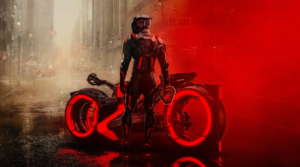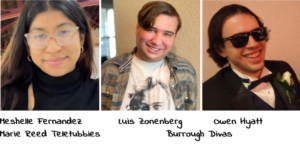Exploring the Renwick Gallery

Processed with VSCO with l5 preset
By Katie Van Lew
The Renwick Gallery, a branch of the Smithsonian American Art Museum, has been the home of contemporary art for the last one hundred and fifty years. The gallery was instituted by William W. Corcoran, a businessman, and philanthropist. When Corcoran retired, he pursued his passion for art collecting, thus producing the idea of his art gallery. Corcoran enlisted the help of an American architect, James Renwick, to fulfill his lifelong dream of assembling an art gallery where he could showcase his very own art collection, as well as other contemporary pieces of the time.
The exterior of the Renwick Gallery reflects Corcoran’s desire for the institution to represent modern art. For inspirational purposes, Renwick visited Paris to study the contemporary architectural structures that populated Paris at the time, taking inspiration for the exterior of the Renwick Galler from the Louvre Museum. Dubbed the “American Louvre,” the Renwick Gallery is home to contemporary artists’ visions.
A majority of the exhibitions at the Renwick are temporary, as the art gallery is constantly undergoing modifications to fulfill Corcoran’s dream of a perpetually contemporary art gallery.
Currently, the museum is hosting three temporary exhibits until 2020.
The first exhibit I visited was sculptor Ginny Ruffner’s Reforestation of the Imagination exhibit. This exhibit intertwines nature with technology, creating an augmented reality for visitors. The exhibit is unique in its effort to get visitors to interact with nature. There are several islands, with each island filled with tree stumps. At first glance, the exhibit has a crestfallen aurora, as the room is filled with tree stumps. On the wall, the exhibit provides visitors with iPads that have an app specifically geared for Rufner’s exhibit. To interact with the art, the visitor picks up the iPad and faces the camera towards a bare tree stump. In a matter of seconds, a flower appears. Rufner’s exhibit is extraordinary, as it subconsciously spreads optimism. Rufner’s interactive art exhibit is open from June 28, 2019 to January 5, 2020.
The second exhibit I visited was Michael Sherrill’s Retrospective exhibit. Like Rufner’s exhibit, Sherill’s work is largely attributed to the beauty of the natural world. Throughout his career, he has created over seventy-three sculptures including teapots, flowers, leaves, and elements of nature. Among his most popular are his teapots; not for the simplicity, but for the abstract evolution of teapots. In his earlier versions of teapots, he creates elegant porcelain teapots such as Blue Tea (1979). As his “tea” art evolved, he began creating teapots that became more abstract, such as Halcyon Tea (1997). This sculpture, made of 23K gold leaf, is mesmerizing in the way that it does not appear as the typical teapot. His abstract approach has allowed his fans to push the boundaries of what it means to simply be something.
In addition, Sherill’s exhibit donned a decadent display of nature, showcasing a vivid array of flowers. Along the wall, Sherill placed three nature-oriented sculptures next to each other: Heavy with Love, Julesvernium, and Brightly Hidden. In the first sculpture, Sherill depicts apples hanging from a branch to convey an emotionally tumultuous part of his life. The next sculpture, Julesvernium, encompasses the cycle of life and death through the birth and death of flowers. The last sculpture on the wall, Brightly Hidden, depicts the Fall of mankind through the representation of the serpent in the garden of Eden. Through his work, Sherill uses the imagery of flowers and other elements of nature to convey emotional struggles and the natural cycle of life. This exhibit is open from June 28, 2019 to January 5, 2020.
The last exhibit I visited, was David Best’s Temple. As I ascended the red-carpeted steps, illuminated by Leo Villareal’s famous LED chandelier, I walked into a spacious room with high ceilings. The room was entirely composed of wood, with intricate wooden designs aligning the walls. As I approached the wooden designs, I noticed the saw names of people, prayers, and messages were engraved on tiny wooden blocks that were then wedged into the crevices of the wall. In the center of the room, there was a table adorned with wooden blocks and pencils. To the side of the table, there was a poster that instituted the overall message of the temple. The primary intention of this temple is to restore peace to the hearts of the broken. The temple is not a place that exudes happiness but instead is a place of deep prayer and somber reflection. Those afflicted by loss, grief, or guilt are encouraged to take a piece of wood from the table, write out an intention, and then place the block into a wooden wall. The exhibit is unique in the sense that it invites all people, of all different religious, to write their pain on the very walls that hold up the exhibit. Of all the exhibits I had the privilege of visiting, David Best’s Temple was by far the most memorable and evocative. This exhibit is open from March 30, 2018 to January 5, 2020.
The Renwick Gallery is located at 1661 Pennsylvania Ave NW, Washington, DC 20006 which is just a short distance from the White House property.
It is open every day from 10 a.m. – 5:30 p.m. If you are interested in reveling in among the most creative contemporaries of our day and age, visit the Renwick today!







